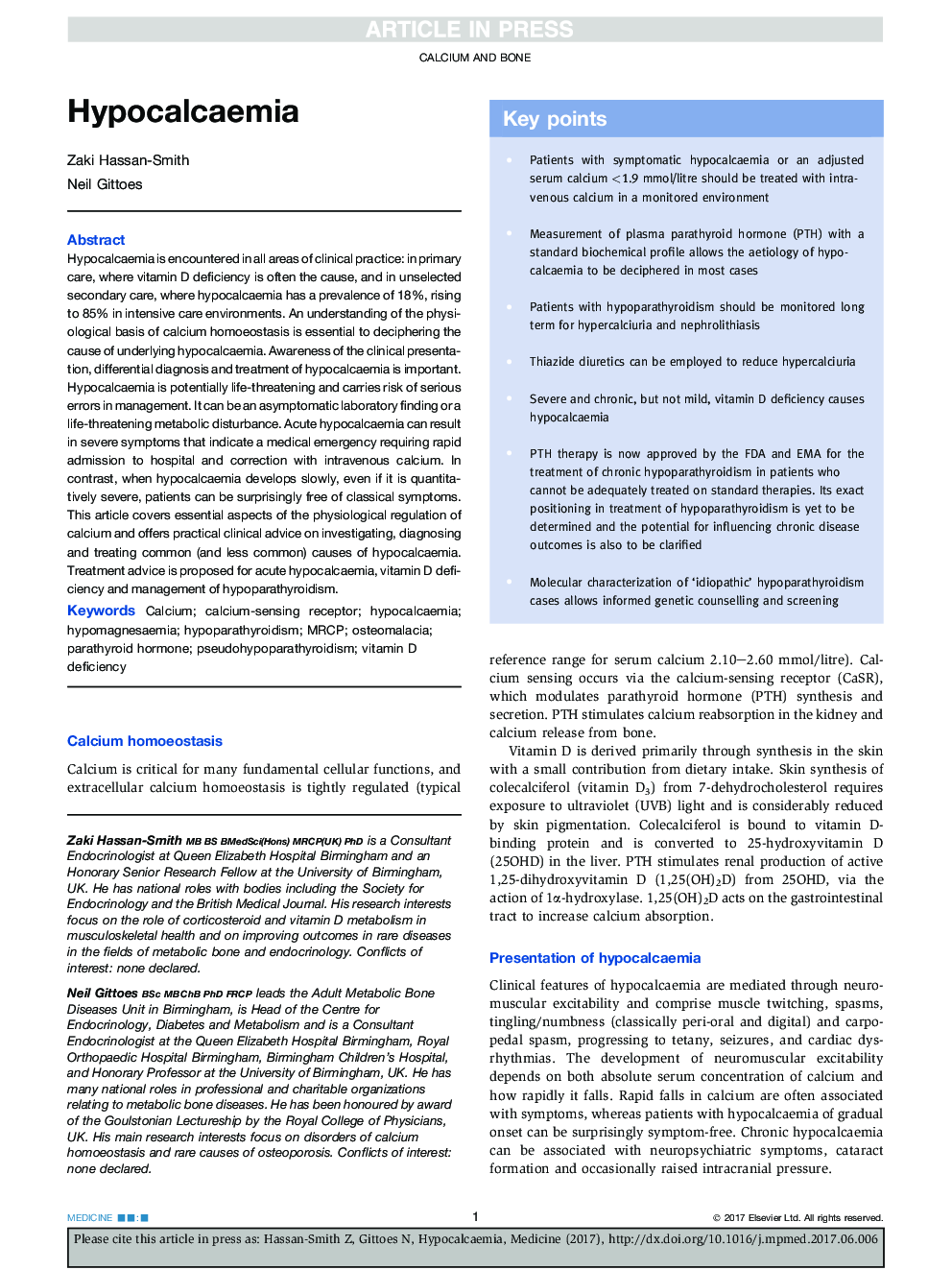| Article ID | Journal | Published Year | Pages | File Type |
|---|---|---|---|---|
| 5681160 | Medicine | 2017 | 5 Pages |
Abstract
Hypocalcaemia is encountered in all areas of clinical practice: in primary care, where vitamin D deficiency is often the cause, and in unselected secondary care, where hypocalcaemia has a prevalence of 18%, rising to 85% in intensive care environments. An understanding of the physiological basis of calcium homoeostasis is essential to deciphering the cause of underlying hypocalcaemia. Awareness of the clinical presentation, differential diagnosis and treatment of hypocalcaemia is important. Hypocalcaemia is potentially life-threatening and carries risk of serious errors in management. It can be an asymptomatic laboratory finding or a life-threatening metabolic disturbance. Acute hypocalcaemia can result in severe symptoms that indicate a medical emergency requiring rapid admission to hospital and correction with intravenous calcium. In contrast, when hypocalcaemia develops slowly, even if it is quantitatively severe, patients can be surprisingly free of classical symptoms. This article covers essential aspects of the physiological regulation of calcium and offers practical clinical advice on investigating, diagnosing and treating common (and less common) causes of hypocalcaemia. Treatment advice is proposed for acute hypocalcaemia, vitamin D deficiency and management of hypoparathyroidism.
Keywords
Related Topics
Health Sciences
Medicine and Dentistry
Medicine and Dentistry (General)
Authors
Zaki Hassan-Smith, Neil Gittoes,
